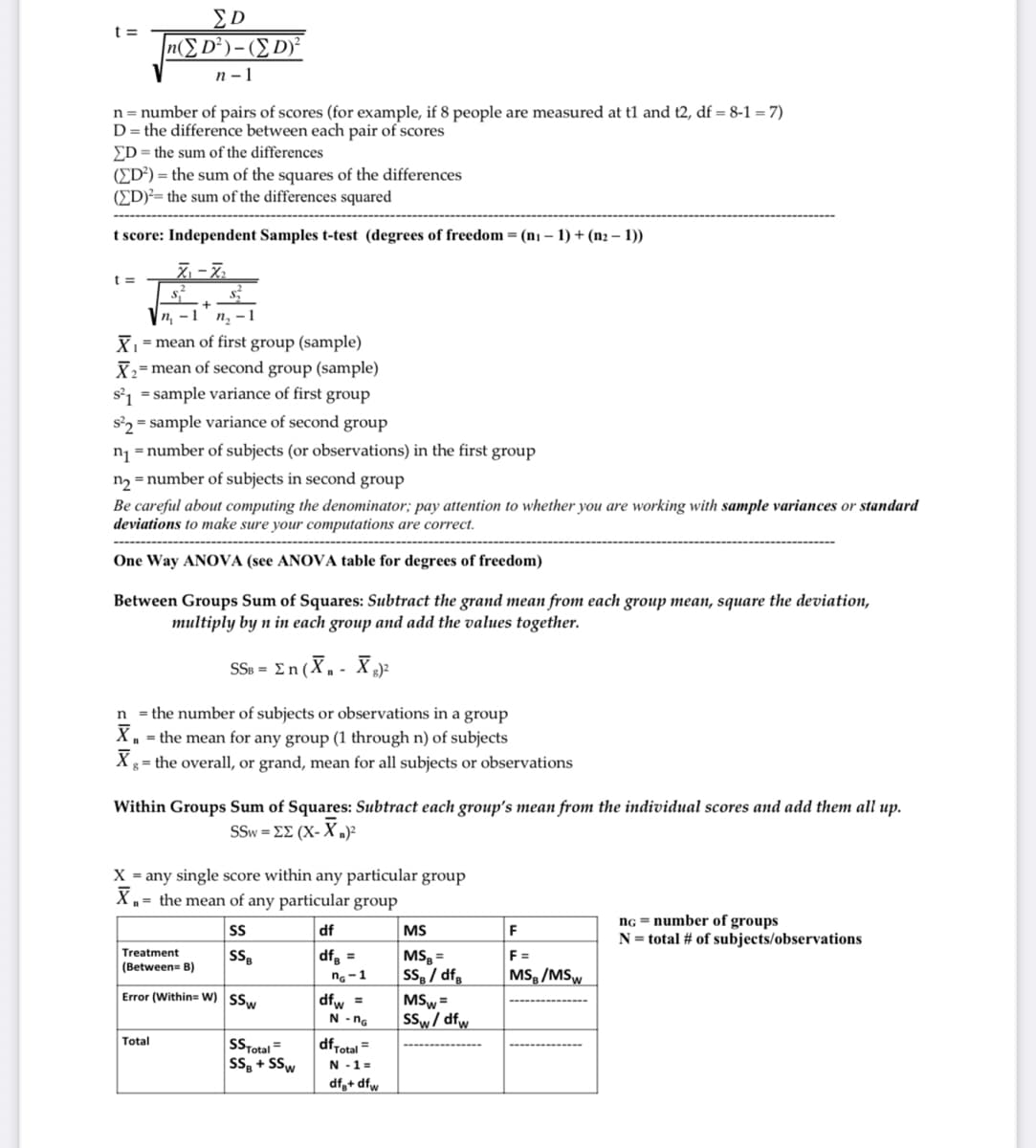2) An Industrial/Organizational Psychologist plans a study on cortisol levels (a measure of stress) in corporate CEOS before versus after a critical meeting to avoid a hostile takeover by a larger company. She measures cortisol levels twice in each of the 24 randomly selected CEOS from Silicon Valley, once before and once after the meeting. She predicts that cortisol levels after the meeting will be different relative to before.
2) An Industrial/Organizational Psychologist plans a study on cortisol levels (a measure of stress) in corporate CEOS before versus after a critical meeting to avoid a hostile takeover by a larger company. She measures cortisol levels twice in each of the 24 randomly selected CEOS from Silicon Valley, once before and once after the meeting. She predicts that cortisol levels after the meeting will be different relative to before.
Glencoe Algebra 1, Student Edition, 9780079039897, 0079039898, 2018
18th Edition
ISBN:9780079039897
Author:Carter
Publisher:Carter
Chapter10: Statistics
Section10.6: Summarizing Categorical Data
Problem 21PPS
Related questions
Question

Transcribed Image Text:2) An Industrial/Organizational Psychologist plans a study on cortisol levels (a measure of stress) in corporate
CEOS before versus after a critical meeting to avoid a hostile takeover by a larger company. She measures
cortisol levels twice in each of the 24 randomly selected CEOS from Silicon Valley, once before and once after
the meeting. She predicts that cortisol levels after the meeting will be different relative to before.

Transcribed Image Text:t =
n(E D²)- (E D)*
n - 1
n = number of pairs of scores (for example, if 8 people are measured at t1 and t2, df = 8-1 = 7)
D= the difference between each pair of scores
ED= the sum of the differences
(ED²) = the sum of the squares of the differences
(ED)²= the sum of the differences squared
t score: Independent Samples t-test (degrees of freedom = (n1 – 1) + (n2 – 1))
n, - 1
п, - 1
X= mean of first group (sample)
X= mean of second group (sample)
s²1
= sample variance of first group
s?2 = sample variance of second group
n1 = number of subjects (or observations) in the first group
n = number of subjects in second group
Be careful about computing the denominator; pay attention to whether you are working with sample variances or standard
deviations to make sure your computations are correct.
One Way ANOVA (see ANOVA table for degrees of freedom)
Between Groups Sum of Squares: Subtract the grand mean from each group mean, square the deviation,
multiply by n in each group and add the values together.
SSu = En (X, - X
n = the number of subjects or observations in a group
X, = the mean for any group (1 through n) of subjects
X
g = the overall, or grand, mean for all subjects or observations
Within Groups Sum of Squares: Subtract each group's mean from the individual scores and add them all up.
SSWΣΣ (X - X
X = any single score within any particular group
X „= the mean of any particular group
ng = number of groups
N = total # of subjects/observations
S
df
MS
F
MS, =
SS, / dfg
Treatment
df, =
F =
(Between= B)
ng-1
MS /MSW
Error (Within= W) SSw
dfw =
N - nG
MSw=
SSw/ dfw
Total
SSTotal =
SS, + SSw
dfrotal=
N -1 =
df,+ dfw
Expert Solution
This question has been solved!
Explore an expertly crafted, step-by-step solution for a thorough understanding of key concepts.
This is a popular solution!
Trending now
This is a popular solution!
Step by step
Solved in 2 steps with 1 images

Recommended textbooks for you

Glencoe Algebra 1, Student Edition, 9780079039897…
Algebra
ISBN:
9780079039897
Author:
Carter
Publisher:
McGraw Hill

Holt Mcdougal Larson Pre-algebra: Student Edition…
Algebra
ISBN:
9780547587776
Author:
HOLT MCDOUGAL
Publisher:
HOLT MCDOUGAL

Big Ideas Math A Bridge To Success Algebra 1: Stu…
Algebra
ISBN:
9781680331141
Author:
HOUGHTON MIFFLIN HARCOURT
Publisher:
Houghton Mifflin Harcourt

Glencoe Algebra 1, Student Edition, 9780079039897…
Algebra
ISBN:
9780079039897
Author:
Carter
Publisher:
McGraw Hill

Holt Mcdougal Larson Pre-algebra: Student Edition…
Algebra
ISBN:
9780547587776
Author:
HOLT MCDOUGAL
Publisher:
HOLT MCDOUGAL

Big Ideas Math A Bridge To Success Algebra 1: Stu…
Algebra
ISBN:
9781680331141
Author:
HOUGHTON MIFFLIN HARCOURT
Publisher:
Houghton Mifflin Harcourt